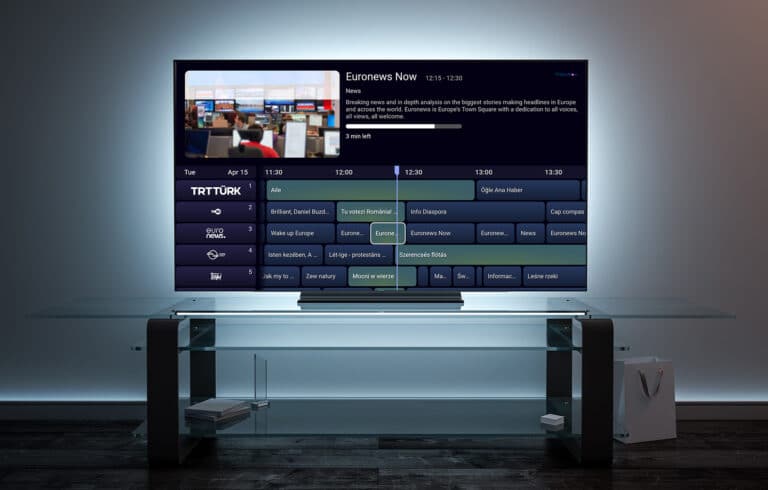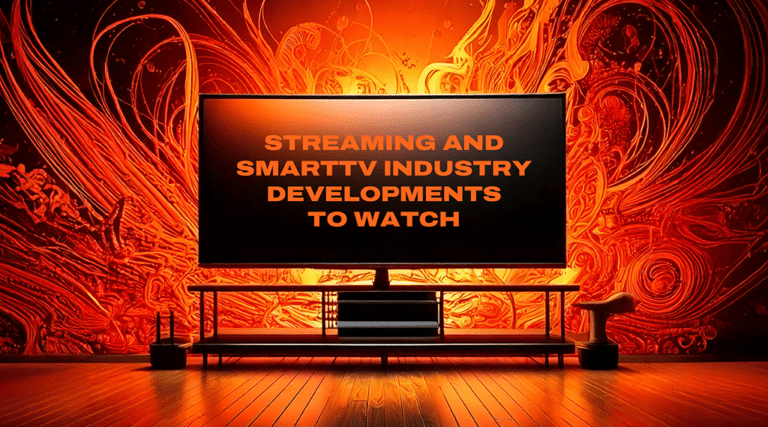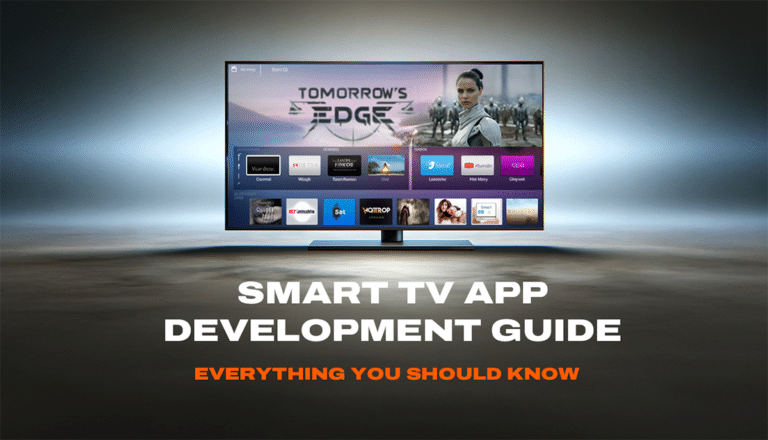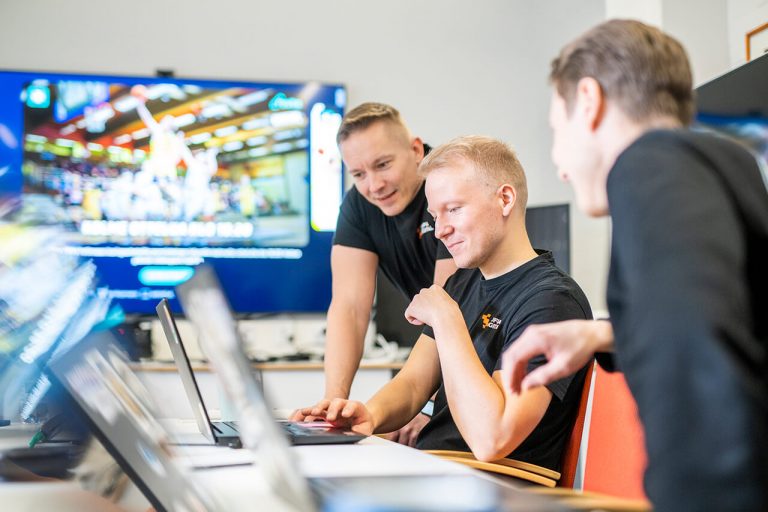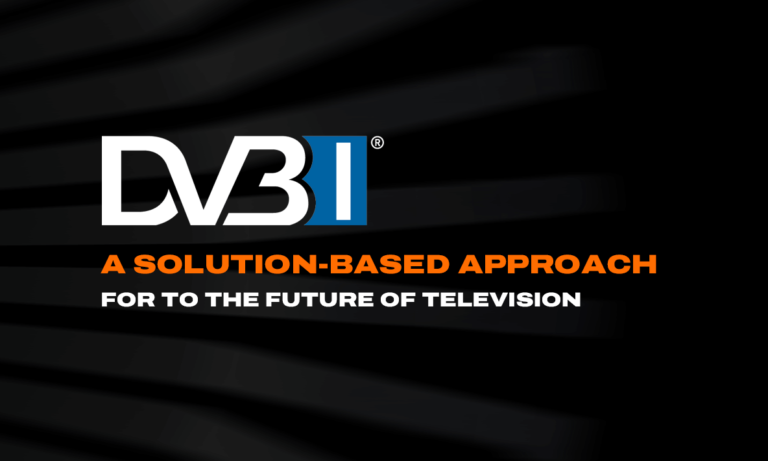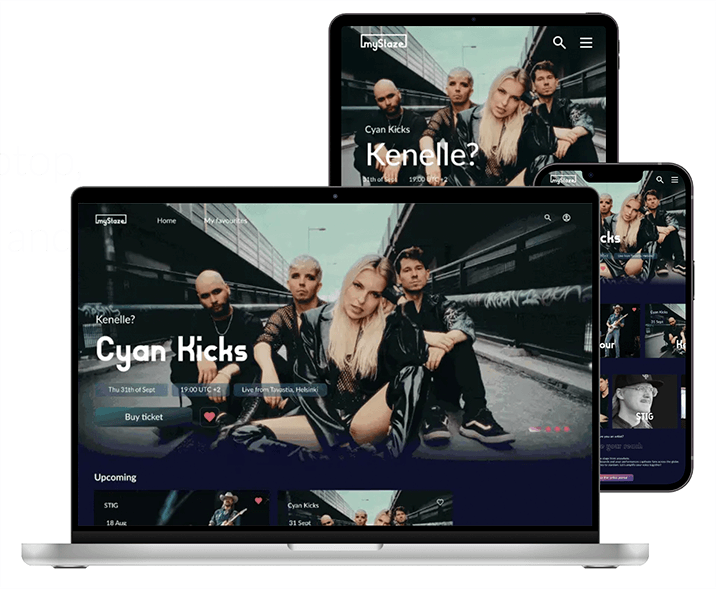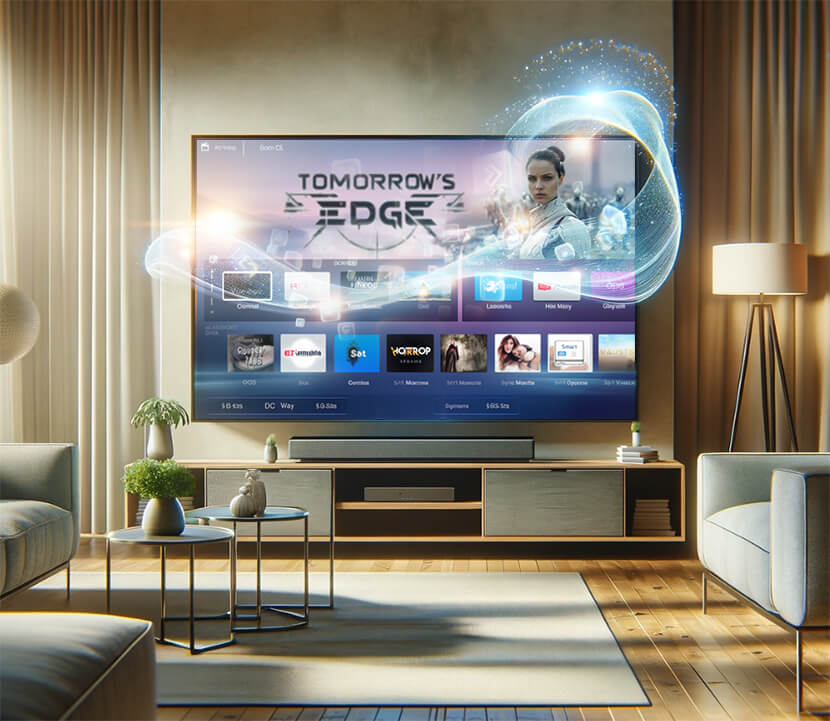
Smart TV technology has significantly altered our interaction with televisions enabling enhanced entertainment and connectivity options. Various operating systems underpin these advanced televisions, each offering distinct features and capabilities. This post provides a look into five major Smart TV operating systems, highlighting the devices they power, their unique features, and what they offer to and demand from a smartTV developer. Also, Sofia’s approach to unified SmartTV app development is introduced.
Android TV / Google TV
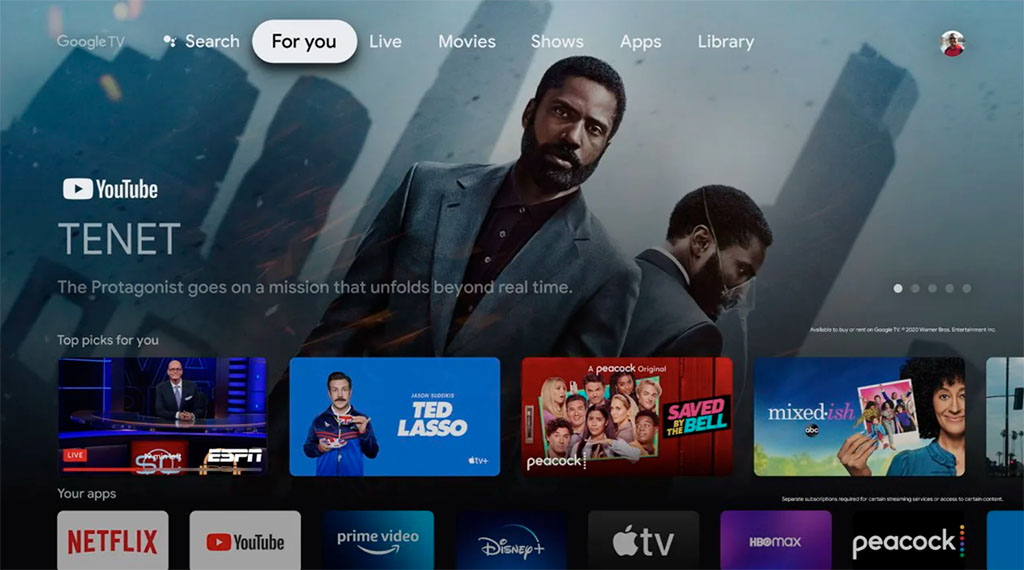
Developer: Google
Devices and Manufacturers: Android TV and Google TV are featured on a variety of devices including smart TVs, streaming sticks, and set-top boxes by manufacturers such as Sony, TCL, and TP Vision.
Highlighted Features:
- Wide App Selection: Access to the Google Play Store allows for a wide selection of apps and games.
- Integrated Casting: Built-in Chromecast functionality enables easy casting of media like photos, movies, and music from various devices to the smart TV.
- Broad Content Selection: Users have access to a broad range of video content and can download games directly to the TV. Popular services like Google, YouTube, Netflix, and Amazon Prime, along with various other streaming services and apps, are readily accessible for OTT entertainment.
- Voice Control: Integration with Google Assistant provides voice control capabilities for improved user interaction.
What is particular in Android TV / Google TV
Integration with Google Services: A particular aspect of Android TV and Google TV is the seamless integration with Google services like Google Search, Google Photos, and Google Calendar, providing an integrated user experience inside the Google ecosystem.
Customizable Interface: Users can customize the home screen to their liking, prioritizing their favorite apps and content.
What is the difference between Android TV and Google TV?
Google TV, built on Android TV, provides a different interface with a Unified Home Screen for improved content discovery, integrating additional platforms like Apple TV. Unlike Android TV, it requires a fresh user account for profile registration. Users can easily upgrade from Android TV to Google TV, experiencing a different overlay on the existing Android TV platform.
Tizen OS (Samsung Smart TV)
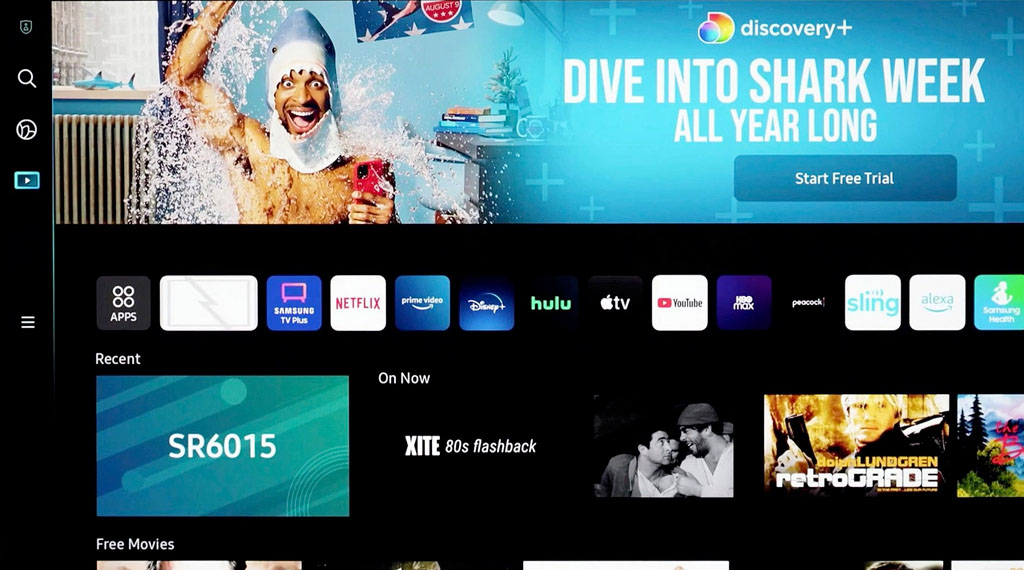
Developer: Samsung
Devices and Manufacturers: Tizen OS is primarily used in Samsung Smart TVs, making it the standard operating system for Samsung’s range of smart televisions. TizenOS has its roots in an effort to develop a linux-based mobile device operating system, and was originally backed by the Linux Foundation as well. Nowadays Samsung is licensing Tizen to other carefully selected manufacturers in a limited fashion.
Highlighted Features:
- Wide Range of Apps: The Tizen OS provides a range of apps through the Samsung Smart Hub, offering various entertainment, news, and social media applications.
- Integrated Content Discovery: Tizen OS has a universal guide feature that helps users discover new content across different apps and services.
- Voice Interaction: Integration with voice assistants like Bixby enables voice control and interaction for a improved user interaction.
What is particular in Tizen OS Smart TV operating system
Samsung Owned: Being the OS of choice for Samsung, and mainly developed by them, Tizen OS is mainly tailored to Samsung Smart TVs, providing a consistent performance across Samsung’s range of televisions.
Cross-Device Compatibility: Tizen OS is designed to work across a variety of devices besides TVs, like wearables and mobile phones, which can provide an integrated ecosystem experience for users invested in Samsung’s ecosystem.
Support for a variety of OTT (Over The Top) services applications by default: Tizen OS on Samsung Smart TVs comes with built-in support for a range of OTT services applications, enabling users to access a wide variety of streaming content without additional installations. This feature eliminates the need for additional installations or downloads simplifying user access for accessing popular streaming services. Moreover, when connected, Samsung Smart TVs with Tizen OS also offer Samsung TV Plus, a service that provides a range of content including variety shows, TV series, and movies free of charge. This combination of pre-installed OTT services and Samsung TV Plus improves content accessibility and expands entertainment options for users.
webOS (LG)
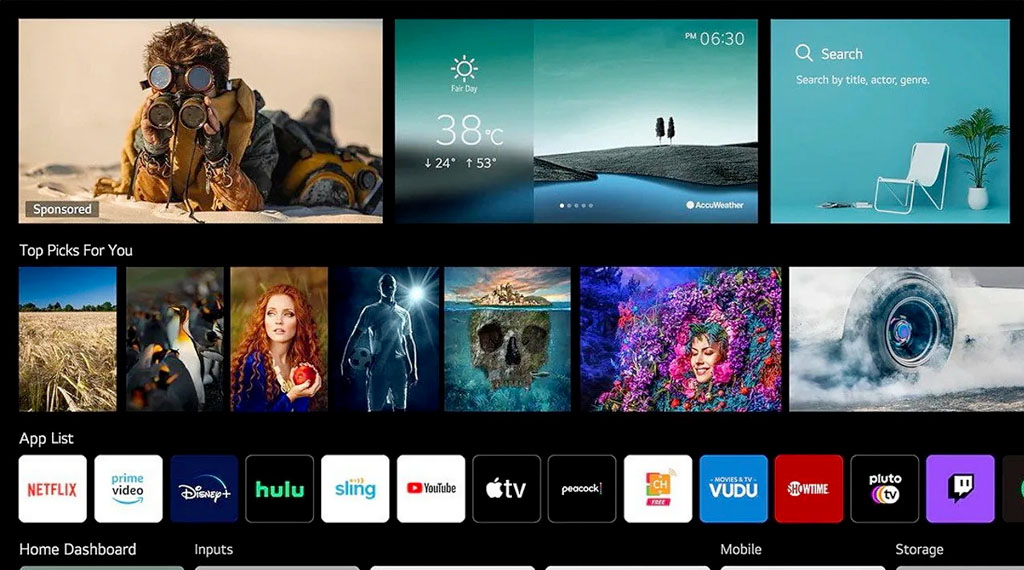
Developer: LG
Devices and Manufacturers: webOS is utilized primarily in LG’s range of smart televisions, serving as LG’s operating system of choice. WebOS was originally acquired by LG from HP, which acquired it in turn from Palm, when it was called Palm webOS. It is a Linux-based platform originally designed to work across many different device types from TVs to wearables. There is an open source version available at https://www.webosose.org/
Highlighted Features:
- User-Friendly Interface: webOS is known for its intuitive and user-friendly interface, making navigation and content discovery straightforward.
- Wide App Availability: Through the LG Content Store, users have access to a variety of apps, games, and other content, covering a range of entertainment preferences.
- Voice Recognition: Integration with voice assistants like Google Assistant and Amazon Alexa provides voice control and interaction, improving usability.
What is particular in webOS Smart TV operating system
Bean Bird Setup: webOS features a unique setup assistant named Bean Bird that helps users in setting up their TV with an engaging and animated guide, facilitating the initial setup process.
Magic Remote Compatibility: The compatibility with LG’s Magic Remote allows for easy navigation, voice control, and a unique point-and-click experience, improving user interaction. (Read more in our blog about Smart TV pointer navigation development )
Fire TV
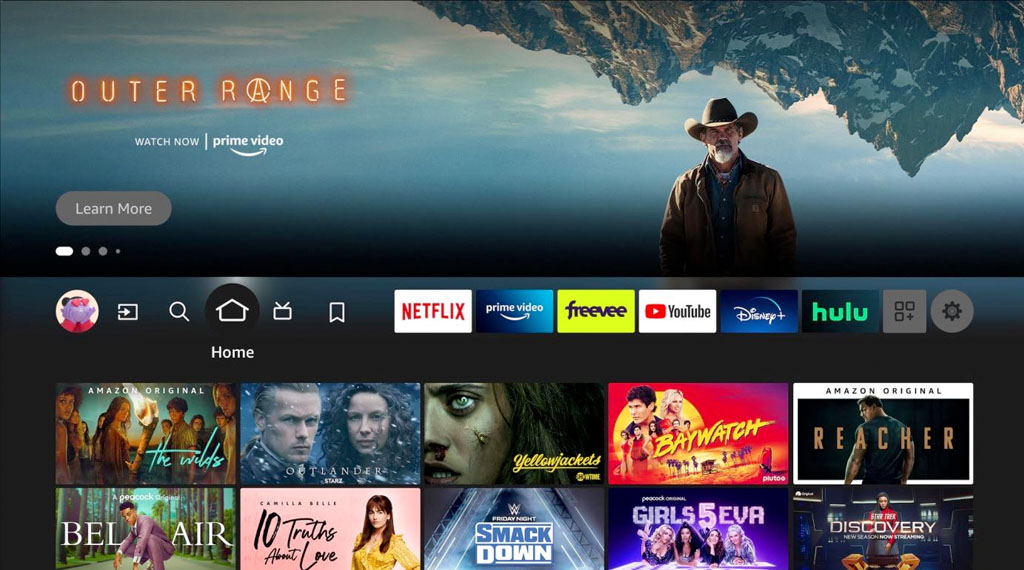
Developer: Amazon
Devices and Manufacturers: Fire TV is featured on a range of devices including smart TVs, streaming sticks, and set-top boxes, with notable manufacturers like Xiaomi, Toshiba and Insignia offering Fire TV Edition smart TVs. FireOS at its core is a fork of Android Open Source Project (AOSP), i.e. an AndroidTV system, but without the Google Services and PlayStore, replaced by the Amazon ecosystem store and supporting services. There are other AOSP based implementations available, but FireTV is the most widely deployed.
Highlighted Features:
- Wide Content Selection: With access to Amazon Prime Video, users can enjoy a wide range of video content alongside apps and games available through the Amazon Appstore.
- Voice Control: Integration with Amazon Alexa enables voice-activated controls and searches, improving user interaction.
What is particular in Fire TV Smart TV operating system
Integration with Amazon Ecosystem: Fire TV is closely integrated with the Amazon ecosystem, providing easy access to Amazon digital content and services.
Alexa Voice Remote: The Alexa Voice Remote feature allows users to control their TV and search for content using voice commands, facilitating user interaction.
VIDAA / Hisense
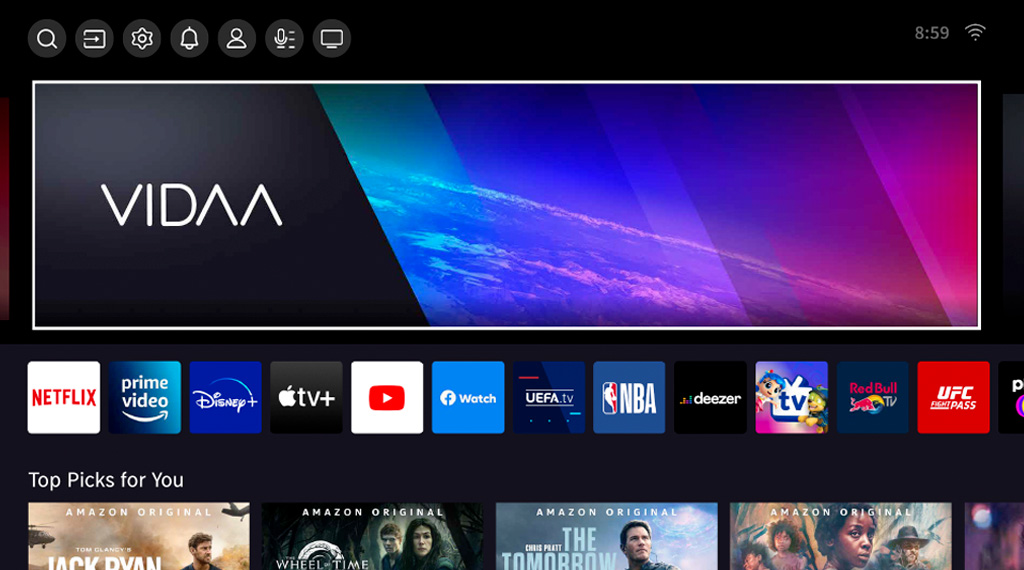
Developer: Hisense
Devices and Manufacturers: VIDAA is utilized exclusively in Hisense smart TVs, serving as Hisense TV’s main operating system.
Highlighted Features:
- Simple Interface: VIDAA offers a simple, customizable interface that provides easy navigation and quick access to favorite apps and channels.
- Content Discovery: The platform offers content discovery features, helping users find new entertainment options.
- Voice Control: Integration with voice assistants enables voice-activated controls and searches, improving usability.
What is particular in VIDAA / Hisense Smart TV operating system
Simple Design: VIDAA’s simplified design focuses on providing a straightforward user experience with minimal layers and quick access to content. VIDAA also implements a well supported and documented HTML5-based development environment, which makes creating and porting applications to the platform straightforward.
Customizable Launcher: Users can customize the launcher to prioritize their favorite apps and channels, providing a personalized user experience.
Streamlining Multi-Platform App Development with Unified Smart TV Framework
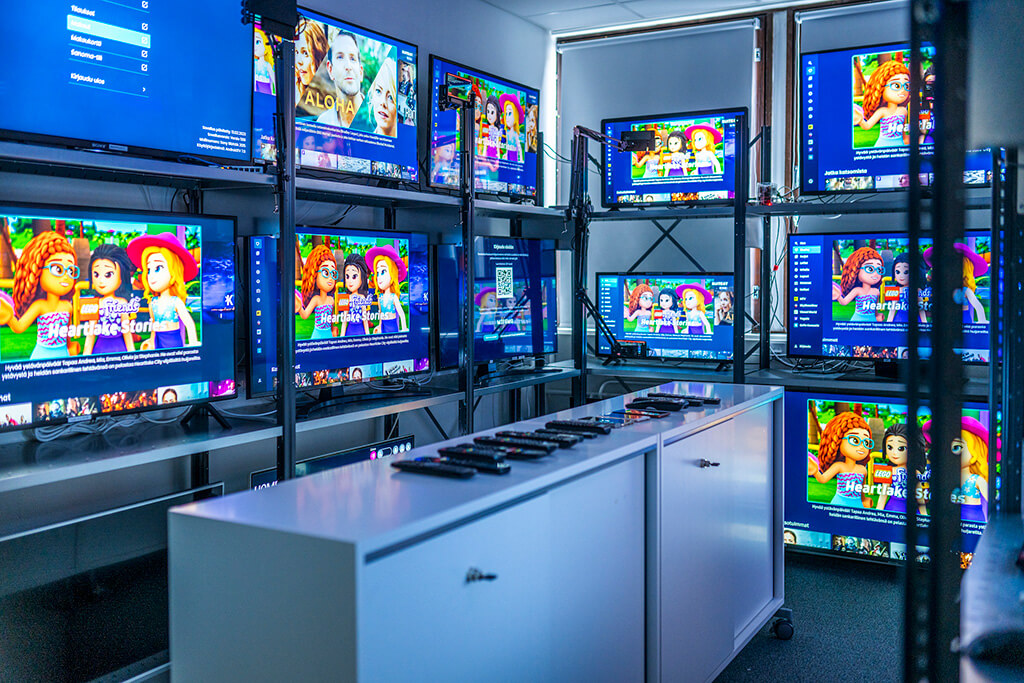
The presence of multiple Smart TV Operating Systems can complicate Smart TV application development due to the varying features and standards each platform holds. The task at hand is to ensure application compatibility and consistent performance across different operating systems such as Tizen, WebOS, and Android TV. Our Unified Smart TV App Development Framework addresses this challenge by providing a singular codebase for developing a Smart TV App that can be deployed on various operating systems. This framework simplifies the development process, making it more efficient compared to creating separate versions of the app for each platform. Through this approach, the process of app development becomes more streamlined and time-efficient, ensuring better cross-platform app performance and user experience.
Main Benefits:
- Reach: More audience with wider device reach.
- Harmonize UI/UX: All devices have the same UI and the same version.
- Timing to market: All updates will reach users at the same time.
Technical Info:
- App UI-code is based on VUE2, using Node-JS.
- HTML5 and JavaScript rendering engine + Native modules.
- App is submitted as “native CTV App” in the devices.
- Supported resolutions are both 720 and 1080.
- DRM+ADS+ANALYTICS is utilized and supported.
- Works also in Hybrid environments like HbbTV
Our framework’s video player has been optimized for each platform:
- HTML5 player
- WebOS native player
- Tizen Avplay
- Android Exoplayer
- OIPF player
- Shakaplayer
- Nuevoplayer
- HLS.JS
Thanks to the HTML5 approach, most updates do not need to go through the Appstore submission process, resulting in lower development and maintenance costs.
Device Coverage:
Our app currently supports at least: Tizen, WebOS, Android TV / Google TV and also HbbTV, Vestel, and operator STBs from Arris, Netgem, Sagemcom and so on
Building Process:
All updates are built (using NPM+Jenkins, etc.) automatically on all platforms instantly after the release is ready. Each platform has its own URL/hostname to differentiate the releases. Environment variables adapt the release to each platform and native APIs when the project is built.
This unified framework addresses the challenges arising from the variety of Smart TV OS, enabling our developers to build and deploy applications across multiple platforms efficiently, ensuring consistent user experience and reduced time-to-market.
